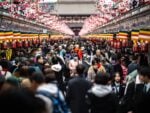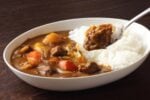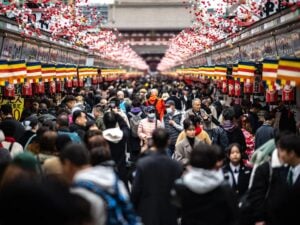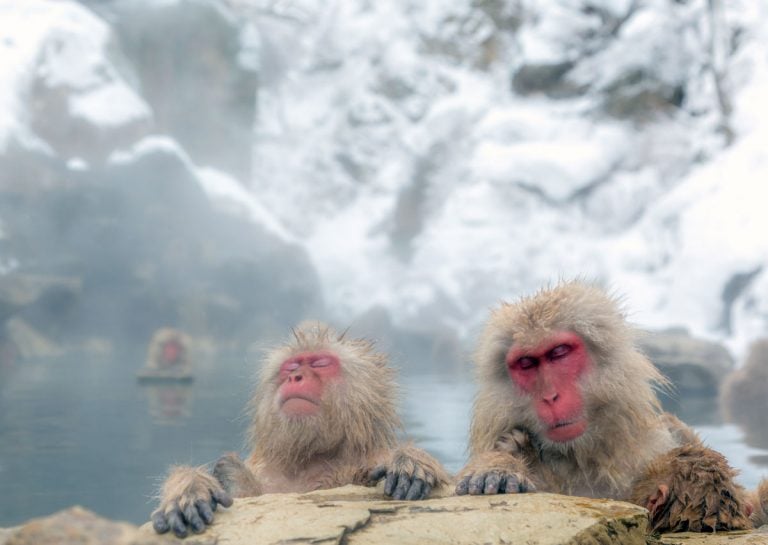
Tokyo only sees snowfall once or twice a year, and the snow usually melts before you can fully enjoy it. Coming from a place where snow carpets the ground almost all winter long, around this time of year, I start to miss the fun of fluffy snow drifts. Fortunately, there are plenty of day (or weekend) trips you can take from Tokyo to find a winter wonderland. Here are seven of the best, listed in order of proximity to the city.
Snow Town Yeti, Shizuoka Prefecture

From Shinjuku Station you can take either the 新宿~箱根桃源台 bus (¥1,710 one way, 1 hr 46 min) or the Romancecar (¥2,860, 1 hr 33 min) to Gotemba Station. From Gotemba Station, the ぐりんぱ線 bus takes you to Snow Town Yeti (¥1,190, 55 min). You can get a discount on the bus from Gotemba if you purchase a set ticket online from Snow Town Yeti in advance, or at the window of the Gotemba bus stop, on the day of.
Right on the slopes of Mt. Fuji, this is one of the closest day trips you can take to go skiing, snowboarding or to just enjoy some snow. Even if it’s not actually snowing on the slopes of Fuji when you go, they make fake snow starting in October. The resort offers three slopes of varying difficulty, and a special snow play area. Plus, it is truly incredible to be able to see the summit of Mt. Fuji from the ski lift.
Access: Around 3hr, ¥2900 – ¥4050
Fujiten Ski Resort, Yamanashi Prefecture
From Shinjuku station take the Chuo line, (1hr 54min, ¥4,130 one way) to Kawaguchiko Station. Then, from Kawaguchiko take the official Fujiten bus, which costs ¥1500 one way, but comes with a special ¥1000 souvenir coupon.
Fujiten Ski Resort is another resort on the slopes of Mt. Fuji (which means it also makes fake snow if no real snow is available). Like Snow Town Yeti, the resort offers skiing and snowboarding. For families, they have a sledding area and a kids play area. Finally, one of their lifts takes you to an observation deck, where you can enjoy the splendor of Mt. Fuji.
Access: Around 2hr 30min, ¥5630
Nikko or Okunikko,Tochigi Prefecture

From Shinjuku Station, take the Limited Express to Tobu-nikko station on the JR Nikko-Kinugawa line (¥4000, 2hr). There is also a longer and slightly cheaper route to Tobu-nikko station on the Shonan Shinjuku line, changing to the Tobu-Nikko line at Kurihashi Station (¥3000, 2hr 28min). From Tobu-nikko station, if you wish to continue on to Okinikko, take the 日光駅~光徳温泉~湯元温泉 bus to the Chuzenji Onsen (中禅寺温泉) bus stop.
Nikko is most famous for its elaborate Toshogu Shrine, which is a UNESCO World Heritage Site. However, the shrine and surrounding town are nestled amongst a mountainous landscape, which sees far more snowfall than Tokyo. If you head deeper into the mountains, to Okunikko (lit. “inner Nikko”), you will be welcomed by a wilderness of frozen waterfalls and lakes, as well as plenty of hot springs hotels.
Access: About 3hr, ¥3000-¥4000
Yuzawa, Niigata Prefecture
From either the Tokyo, Ueno or Omiya stations, take the Jōetsu-Shinkansen to Gala Yuzawa Station.
As long as you take the Shinkansen, Yuzawa is faster to access than the closer Fuji resorts.The town has several ski resorts, including Gala Yuzawa, which offers a lift to the slopes straight from the JR station and the Yuzawa Kogen Resort, which has the largest gondola in the world. The third main resort, Ishiuchi Maruyama, is famous for its powder snow.. The three main resorts even offer a joint ticket, making Yuzawa perfect for skiing and snowboarding pros. With access to so many slopes, you could never get bored! The area also has many onsen, perfect for an evening après ski.
Access: 1 hr 43 min, ¥6,790 one way
Kusatsu Onsen, Gunma Prefecture
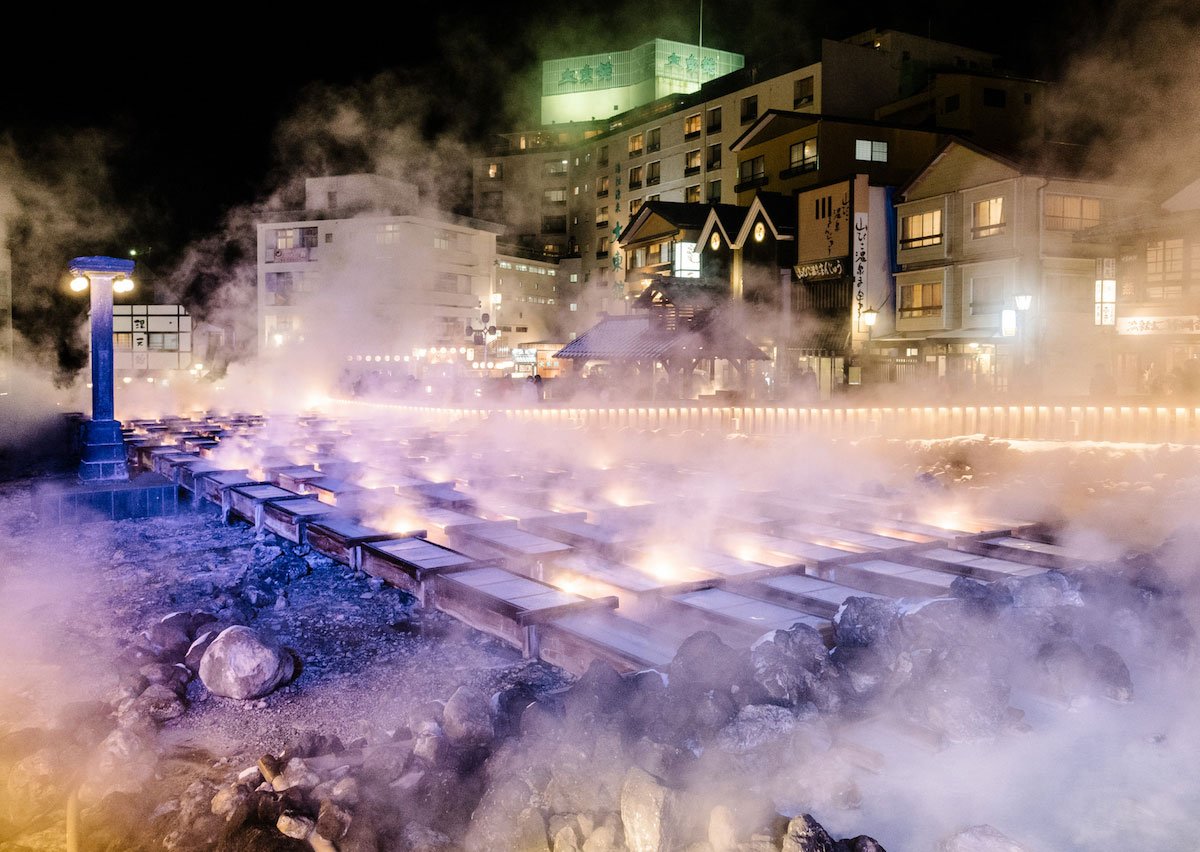
The cheapest route is on the Ueno-Tokyo line for Kagohara, then changing at Akabane for Naganohara-Kusatsuguchi Station, and finally the local bus headed to Kusatsu Onsen (¥6,080, 3hr). There are also highway buses from Shinjuku for Kusatsu Onsen (about 4hr, ¥3500 one way), or you can take the Hokuriku-Shinkansen (about 3hr, ¥8,260).
The hot spring town of Kusatsu usually gets snow in the wintertime, which makes for a beautiful contrast with the turquoise blue of the spring waters. Kusatsu Onsen is a perfect place to enjoy “yukimi”, the relaxing activity of enjoying the falling snow. Although there is a ski resort nearby, this onsen is an especially good day trip for those who want to enjoy snow in a more leisurely manner.
Access: About 3hr, ¥6,080
Minakami Onsen, Gunma Prefecture
The fastest, but most expensive, route is by the Jōetsu Shinkansen to Jomokogen Station (1hr 17min, ¥6,020).You can then take a bus to Minakami Station (25 min, ¥630). Otherwise, take the JR Takasaki Line from Tokyo or Ueno stations, then change at Takasaki station to the JR Joetsu Line to Minakami Station (¥2,640, 2hr 57min).
The Minakami Onsen area has both ski and hot spring resorts. The most famous hot spring is Takaragawa onsen, with large outdoor baths (some of the biggest in Japan), overlooking a river. Takaragawa is also one of the only onsen in Japan which has mixed-gender baths. In winter, the outdoor onsen,” rotenburo”, are surrounded by beautiful snowy landscapes.
Access: 2hr-3hr, from ¥2,640 to ¥6,650 one way
Jigokudani Monkey Park, Nagano Prefecture
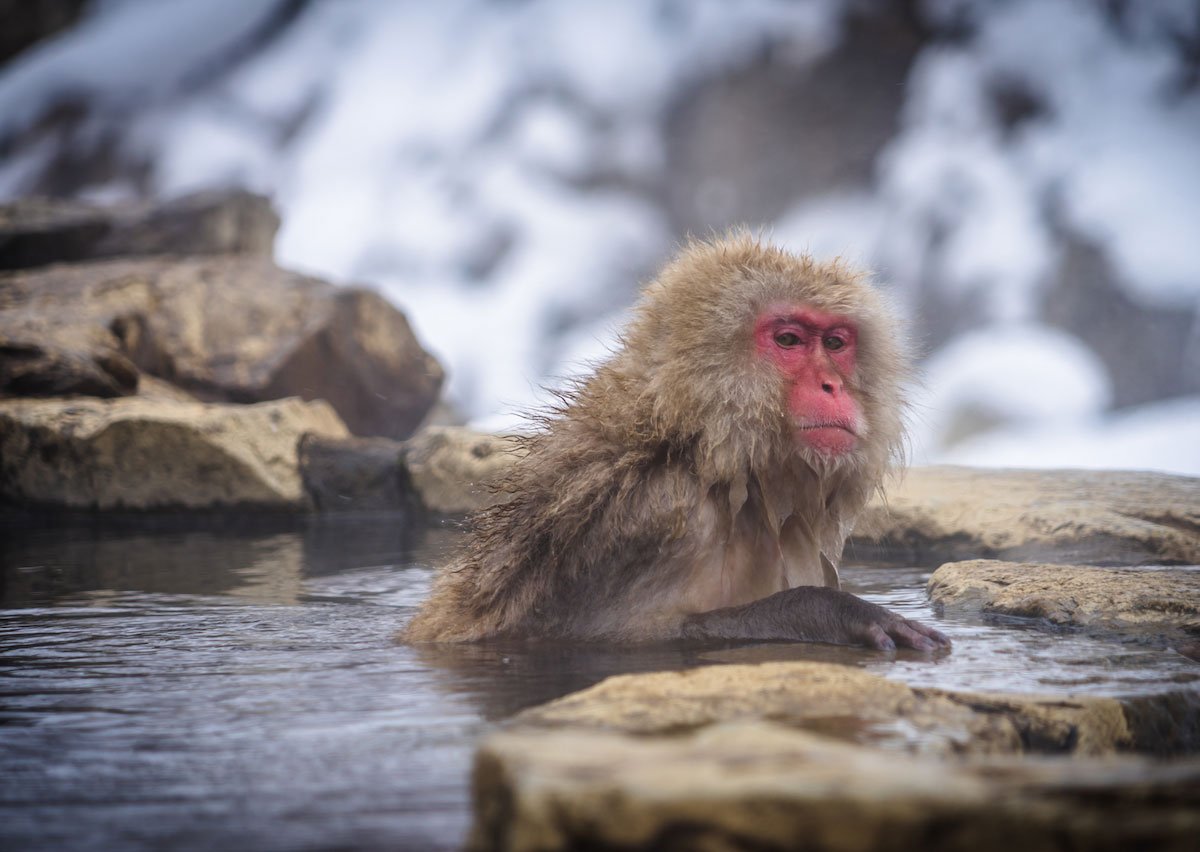
Recommended Route from Tokyo: Take the Hokuriku-Shinkansen from either the Tokyo, Ueno or Omiya Stations to Nagano Station (1 hr 23 min, ¥8,340). From Nagano take the Express Bus to Jigokudani Monkey Park (¥1,500, 47 min).
The sight of monkeys soaking in snow-surrounded hot springs is one of Japan’s most iconic. Jigokudani Monkey park is home to these Japanese Macaques, or Snow Monkeys, as well as the natural hot springs that the monkeys rest in to keep warm in winter. But the onsen aren’t just for the monkeys; the surrounding areas have many lovely hot spring resorts. Jigokudani can be a day trip, but to really profit from the local onsen, staying a night or two would be best.
Access: Around 3hr, 30min, ¥9,840 one way

